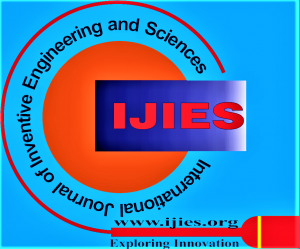![]()
Smart Parking System Using Arduino and Ultrasonic Sensors
Soumyadeep Mondal
Soumyadeep Mondal, Department of Computer Science and Engineering (SCOPE) Vellore Institute of Technology (VIT University), Chennai (Tamil Nadu), India.
Manuscript received on 20 April 2025 | Revised Manuscript received on 12 May 2025 | Manuscript Accepted on 15 September 2025 | Manuscript published on 30 September 2025 | PP: 22-28 | Volume-12 Issue-9, September 2025 | Retrieval Number: 100.1/ijies.E110212050525 | DOI: 10.35940/ijies.E1102.12090925
Open Access | Editorial and Publishing Policies | Cite | Zenodo | OJS | Indexing and Abstracting
© The Authors. Blue Eyes Intelligence Engineering and Sciences Publication (BEIESP). This is an open access article under the CC-BY-NC-ND license (http://creativecommons.org/licenses/by-nc-nd/4.0/)
Abstract: Effective parking management has become a significant concern due to the quick rise in urbanisation and car ownership. Conventional parking structures frequently cause traffic jams, wasted time, and annoyance for drivers. In order to solve these problems, this study proposes a Smart Parking System that automates the parking spot detection process by utilising an Arduino Uno, ultrasonic sensors, buzzers, and an LCD display. To determine whether cars are in their allotted parking spaces, the system makes use of ultrasonic sensors. Every sensor calculates slot occupancy based on a predetermined threshold after continually measuring the distance from an obstacle (vehicle). An Arduino microcontroller processes the gathered data and updates the parking availability in real time on an LCD. Buzzers also serve as an alarm system that shows the status of occupied slots, making it easier for drivers to find open spots. To confirm the correctness and responsiveness of the suggested system, Tinker CAD was used to simulate it and test it in various scenarios. The technology detects parked cars with little error and gives quick feedback, according to the results. This automated technology enhances overall efficiency, reduces parking time, and requires less human intervention compared to traditional parking systems. This study demonstrates how innovative parking systems can help reduce traffic and enhance space utilisation in urban settings. To further expand the system’s capabilities, future enhancements might include mobile app connectivity, IoT integration forremote monitoring, and AI-based slot prediction.
Keywords: Smart Parking, Arduino Uno, Ultrasonic Sensors, Automation, IoT, Traffic Management.
Scope of the Article: Internet of Things (IoT)
